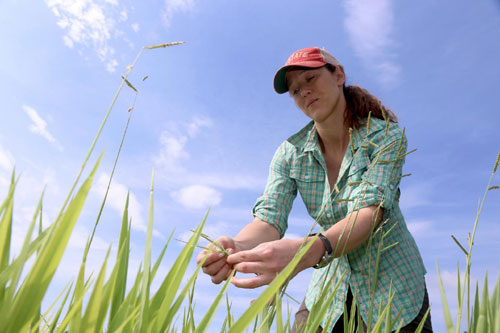



UK begins consultations on use of fertilisers in effort to cut ammonia emissions
The government has launched a consultation seeking views on reducing ammonia emissions from solid urea fertilisers used for growing plants and crops.
Ammonia emissions are harmful to natural habitats and our rivers and lakes, as well as to human health, with 87 percent of the UK’s ammonia emissions coming from farming. The Government has committed to reducing ammonia emissions by 8 percent of 2005 levels by 2020, and a 16 percent reduction by 2030.

Taking action on solid urea fertilisers has the potential to reduce pollution caused by:
- Ammonia reacting with other pollutants – nitrogen oxides and sulphur dioxide – to form particulate matter (PM2.5) which is harmful to cardiovascular and respiratory health.
- Nitrogen deposited on sensitive habitats such as peat bogs. This leads to excess nitrogen in soils that damages the growth of certain plant species.
- Nitrogen leaching through the soil and surface run-off which pollutes water courses, causing harm to plants and animals and impacting on water quality.
The consultation presents three cost effective options:
- A total ban on solid urea fertilisers
- A requirement to stabilise solid urea fertilisers with the addition of a urease inhibitor - a chemical that helps slow the conversion of urea to ammonium
- A requirement to restrict the spreading of solid urea fertilisers so they can only be used from 15 January to 31 March
While each of these options will support the Government’s commitment to reducing ammonia emissions, a ban on solid urea fertilisers would achieve around 31 percent of the ammonia reduction target by 2030.
Reducing ammonia emissions will significantly reduce nitrogen deposition to land and in turn help reduce damage to peat bogs, which are an important carbon sink, thereby helping to tackle climate change.
Environment Secretary George Eustice said:
“Ammonia emissions from agriculture are causing harm to sensitive and important habitats by making soils more acidic which damages the growth of some plant species, impacting on biodiversity. They are also harmful to human health, and we welcome views on how we can address their use in agriculture so that we can all breathe cleaner air.
“Any changes will need to be made in a way that is realistic and achievable for farmers, but which help us to achieve our ambitious targets for better air quality. We are committed to working with farmers to help them do this.
“This will build on the comprehensive action we are already taking to tackle air pollution – with emissions of fine particulate matter down by 9 percent since 2010 and £3.8 billion invested in ensuring our air is the cleanest in decades.”
Jenny Hawley, Policy Manager at Plantlife said:
“Plantlife welcomes this important consultation. Concerted action from landowners, industry and government to flatten the curve of rising ammonia emissions and start bringing them down is urgently needed to arrest the effect ammonia is having on wild plants, lichens and fungi and the wildlife that rely on them.
“Rising ammonia emissions – much from agricultural fertilisers – are also contributing to unnaturally nutrient-rich soil conditions: over a third of Britain’s wild flowers prefer low nutrient conditions and are therefore losing their roothold. Species like harebell and bird's-foot trefoil are being crowded out by more ‘brutish’ species like brambles, hogweed and hemlock that revel in excess nitrogen, with knock-on effects that can be lethal to the habitats and the wildlife they support.”
As well as this consultation, the government is also continuing work to tackle ammonia emissions from other agricultural practices through a range of measures including the use of low emission agricultural spreading techniques by 2025, requiring slurry stores to be covered by 2027, and setting standards for new livestock housing.
Efforts to reduce ammonia emissions are just one part of the government’s Clean Air Strategy, introduced in January 2019. This sets out an ambitious package of legislation and support that will be needed to meet our ambitious targets on air quality, while the 25 Year Environment Plan commits to restoring 75 percent of protected habitats to favourable condition.
Air pollution has reduced significantly since 2010, with emissions of fine particulate matter - the pollutant of most harm to human health - down by 9 percent. But tackling ammonia emissions will help to bring the levels of this pollutant down even further, as ammonia reacts with other pollutants to form fine particulate matter.
The consultation is open from today for 12 weeks, until 26 January 2021.
TheCattleSite News Desk


